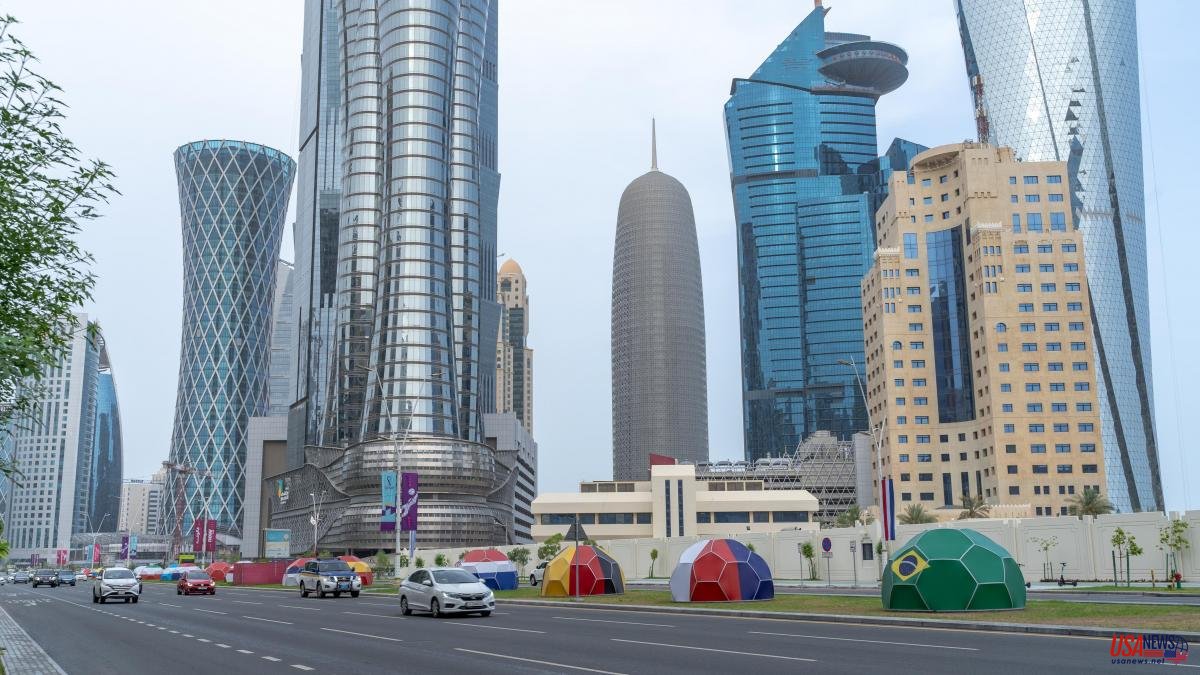Qatar hosts, between November 20 and December 18, the 22nd edition of the Men's Soccer World Cup. The organization of the competition has been controversial, although the economic power of the Asian country has prevailed in the face of the avalanche of criticism for the violation of human rights. Beyond football, Qatar maintains a peculiar relationship with the motor world. On the streets of the capital, Doha, luxury cars and exclusive sports cars can easily be seen. And it is that collecting these cars is one of the trends among the richest Qataris.
Despite not having a widespread motor culture as it does in other countries of the world, in recent years competitions have been attracted to the Arab emirate at the beating of a checkbook. The MotoGP World Championship has visited the Losail International Circuit since 2004. For its part, Formula 1 ran for the first time on the same stage in 2021 and a contract has been signed for the Persian Gulf country to organize a grand prix during the next 10 seasons. But what happens on the roads? How is it circulated? We are going to see 11 characteristics of driving in Qatar.
In Qatar, as in Spain and most other countries in the world, people drive in the right lane and cars drive on the left side. Road regulations are similar to those in our country: mobile phones cannot be manipulated, traffic lights and maximum speeds must be respected, etc. However, 80% of the population is immigrant and this causes drivers to have very different customs behind the wheel. Thus, courtesy and respect for other users are values that are not usually abundant in its streets and highways. Thus, those who are not used to driving in Qatar may take some time to adjust.
Far from the supercars and exclusive cars that can be seen in the Asian country, the most common are SUVs or 4x4s, most of them with automatic transmission. In fact, the Toyota Land Cruiser is the best-seller, as characteristics such as its reliability and ability to drive off-road have made it popular among local drivers.
The seat belt is not mandatory for all vehicle occupants. Only people who travel in the front seats of the car should use it, while in the rear seats it is not essential. A situation that can have very serious consequences, since the belt is the most important passive safety element -also in the rear seats-. Likewise, there are also no mandatory child restraint systems (CRS) for children.
The speed limits are similar to those in our country. First of all, the maximum speed within the cities is 50 km/h. On highways, you can drive at speeds ranging between 80 and 100 km/h. Finally, on highways and dual carriageways the established limit is 120 km/h.
Road signs in Qatar are written in two languages: Arabic and English. Another curiosity is that the distances are measured in kilometers and not in miles, which makes things easier, in part, for Spanish foreigners.
The Persian Gulf country has a zero tolerance policy when it comes to drinking while driving. A blood alcohol level above zero is considered a crime, which carries a prison sentence and large fines. Nor can you drink in public spaces or appear drunk on the street.
A driver's license is strictly necessary to drive in Qatar, and the minimum age to drive a car is 18 years. Foreigners from certain countries (including Spain) can drive up to 7 days with their country's driving license. In case of staying longer, you must obtain the international permit, which is valid for 6 months. If you obtain a residence permit, you must pass an exam to be able to drive.
A common problem in Spanish cities is the lack of parking spaces on the street. With the intention that vehicles do not park for a long time in a square, blue, green or orange zones are usually implemented. However, in Qatar most places where you can park your car are free, except for some specific areas of Doha and some shopping centers.
Although it may seem that this only happens in the movies, meeting a camel walking or crossing in the middle of the road is common. And it is that, outside the cities, there are a large number of roads that cross desert areas. If you collide with one, the fine that they are going to give you is considerable.
According to the Spanish Ministry of Foreign Affairs, "the type of driving in Qatar can be classified as risky, with the accident rate for road accidents being much higher than international standards." In the event of an accident, you must call the police and do not leave the scene of the accident.
Qatar is a country very rich in oil reserves, which translates into low fuel prices. Thus, the money that the Qataris pay to fill the tank of their vehicle is much less than what we Spaniards have to pay. So much so that gasoline and diesel are between 0.5 and 0.6 euros per liter.













